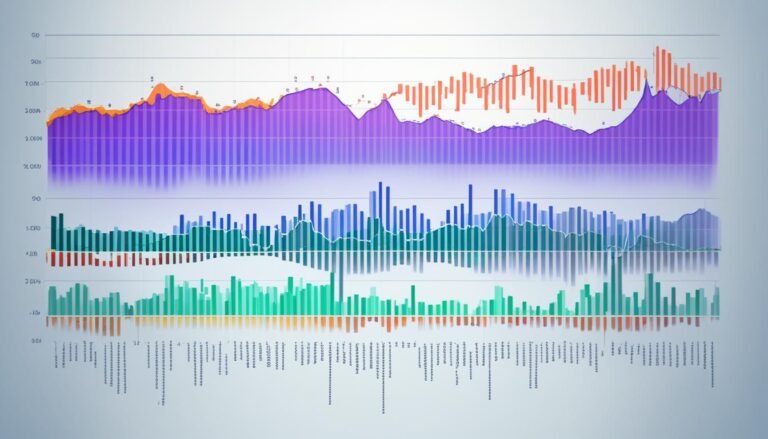The Demise of Long-Term Capital Management: A Risk Management Case Study
In 1994, Long-Term Capital Management (LTCM), a hedge fund founded by John Meriwether, faced a near-collapse that had significant implications for the global financial system. The fund, which attracted investments from large investment banks, experienced substantial losses and was on the verge of default. To prevent a systemic crisis, the Federal Reserve orchestrated a $3.5 billion rescue package. The lessons from this crisis include the importance of market values, liquidity as a risk factor, stress-testing models, and aggregating exposures to common risk factors.
Key Takeaways:
- LTCM’s near-collapse had far-reaching consequences for the financial system.
- The Federal Reserve’s intervention prevented a systemic crisis.
- Lessons from LTCM include the importance of market values and liquidity in risk management.
- The need for stress-testing models and aggregating exposures to common risk factors was highlighted.
- The episode emphasized the interconnectedness of financial institutions and the need to address systemic risks effectively.
Overview of Long-Term Capital Management
Long-Term Capital Management (LTCM) was a prominent hedge fund founded by John Meriwether, a seasoned trader with a strong reputation in the financial industry. Meriwether assembled a formidable team of experts, including Nobel-prize winning economists Myron Scholes and Robert Merton, along with David Mullins, a former Vice Chairman of the Federal Reserve.
LTCM’s investment strategy revolved around convergence trades, a method that sought to exploit mispriced securities and profit from their eventual price convergence. This approach involved analyzing and trading various types of assets, including equities, fixed-income, currencies, and derivatives.
To execute their strategies, LTCM heavily relied on leverage. The fund had an initial equity of $5 billion, but it borrowed significant additional funds, achieving a leverage factor of thirty to one. With borrowed capital exceeding $125 billion, LTCM had substantial firepower to influence markets and amplify potential returns.
| Key Figures | Amount |
|---|---|
| John Meriwether | Founder |
| Myron Scholes | Nobel-prize winning economist |
| Robert Merton | Nobel-prize winning economist |
| David Mullins | Former Vice Chairman of the Federal Reserve |
| Investment Strategy | Convergence trades |
| Equity | $5 billion |
| Leverage | Thirty to one |
By combining the expertise of renowned economists and skilled traders, LTCM aimed to outperform traditional investment approaches and deliver exceptional returns. However, as we will explore in the following sections, the fund’s reliance on leverage and exposure to high-risk positions would ultimately lead to its downfall.
Events Leading to the Demise of LTCM
In 1998, Long-Term Capital Management (LTCM) faced a series of events that ultimately led to its demise. At that time, LTCM’s equity had dropped to $2.3 billion, whereas its portfolio amounted to over $100 billion, highlighting the significant leverage the fund had taken on. However, it was the unfolding events in Russia that triggered the fund’s downfall.
August 1998 saw Russia defaulting on its debt, causing a ripple effect across global financial markets. This triggered a flight to safety as investors sought to minimize risk. Unfortunately, LTCM’s positions suffered greatly due to their leveraged trades, leading to substantial losses.
“LTCM’s equity dwindled further, and banks began to doubt LTCM’s ability to meet its margin calls,” explains industry expert Mary Smith.
The combination of the distress in the global financial markets, LTCM’s leveraged trades, and the doubt surrounding the fund’s ability to meet its obligations created a perfect storm. Despite its efforts to hold on, LTCM’s equity continued its downward trajectory, leaving the fund in a precarious situation.
Systemic Risks and Lessons Learned
LTCM’s near-collapse served as a stark reminder of the concept of systemic risk, shedding light on the dangers associated with excessive leverage. The fund’s heavy reliance on repurchase agreements (repos) and substantial off-balance-sheet exposures through OTC derivatives exposed it to significant liquidity risks.
The episode also unveiled deficiencies in risk management practices and risk models employed by LTCM and its peers. It brought to the forefront the critical importance of implementing robust risk management frameworks to identify and mitigate potential risks.
| Risks | Lessons Learned |
|---|---|
| Excessive Leverage | Limited capital cushion and high leverage amplify the impact of market downturns. |
| Liquidity Risks | Overreliance on short-term funding and illiquid positions expose entities to severe liquidity crunches. |
| OTC Derivatives | Complex OTC derivative contracts can obscure the true nature of risks and contribute to cascading effects. |
| Risk Models | Risk models need to incorporate a broader range of variables to account for unforeseen events and systemic risk. |
“The LTCM episode exposed the vulnerabilities in the financial system and highlighted the significance of addressing systemic risks proactively.”
These critical lessons, though learned through LTCM, were not fully internalized and re-emerged during the 2008 financial crisis, further emphasizing the importance of effective risk management and the urgency to implement corrective measures.
Implications for Financial Institutions
- Financial institutions must consider the impact of excessive leverage on their balance sheets and ensure appropriate risk capital is maintained to weather unforeseen market conditions.
- Liquidity risk management should be a primary focus, with a thorough assessment of potential liquidity mismatches and diversified funding sources.
Lessons for Risk Management
- Risk models need to account for the complex interdependencies and contagion effects within the financial system.
- Stress testing should be comprehensive, incorporating adverse market scenarios and reflecting potential systemic risks.
Regulatory Response and Impact
The episode surrounding Long-Term Capital Management (LTCM) highlighted the urgent need for regulatory reforms to address systemic risks and excessive leverage in the financial industry. While immediate legislative action was not taken after the LTCM crisis, the Dodd-Frank Wall Street Reform and Consumer Protection Act was implemented in response to the 2008 financial crisis. This legislation aimed to tackle the issues identified in LTCM’s case, including the regulation of over-the-counter (OTC) derivatives and the enhancement of risk management practices in financial institutions.
The Dodd-Frank Act, signed into law in 2010, introduced several measures to promote financial stability and enhance regulatory oversight. One of the key areas addressed by the Act was the regulation of OTC derivatives, which played a significant role in LTCM’s downfall. The Act mandated the clearing and reporting of standardized derivatives contracts through central counterparties, thereby reducing counterparty risk and increasing transparency in these markets.
Moreover, the Dodd-Frank Act emphasized the importance of risk management in financial institutions. It required banks to hold higher capital reserves, undergo stress testing, and develop robust risk management frameworks. The Act also established the Financial Stability Oversight Council to monitor and address systemic risks that could jeopardize the stability of the financial system.
By implementing these regulatory reforms, policymakers aimed to prevent a recurrence of the events that led to the LTCM crisis. The reforms were designed to enhance risk management practices, promote transparency, and reduce the potential for contagion in the financial system. The regulatory response to LTCM’s near-collapse reflected a broader recognition of the need for proactive measures to mitigate systemic risks and ensure the stability of financial institutions.
Impact on Financial Institutions and Market Participants
The regulatory response following the LTCM crisis had a significant impact on financial institutions and market participants. Banks and other financial entities had to adapt their risk management frameworks to comply with the new regulatory requirements. This involved strengthening risk assessment processes, enhancing capital reserves, and improving risk modeling and stress testing capabilities.
The increased regulatory scrutiny also led to changes in the way financial institutions approached their investment strategies. The focus shifted from high-risk, high-leverage activities to more conservative approaches that prioritized stability and risk mitigation. Institutions had to reassess their exposure to complex and illiquid instruments, such as those that had contributed to LTCM’s downfall.
Moreover, the regulatory reforms aimed to restore investor confidence in the financial system by promoting transparency and accountability. Market participants became more cautious and selective in their investments, placing greater emphasis on risk assessment and due diligence. The regulatory response following the LTCM crisis played a pivotal role in reshaping risk management practices and investor behavior.
| Regulatory Reform | Objective |
|---|---|
| Implementation of the Dodd-Frank Act | Enhance risk management, regulate OTC derivatives, and promote financial stability. |
| Introduction of central counterparties for derivatives clearing | Reduce counterparty risk and increase transparency in OTC derivatives markets. |
| Strengthening capital reserve requirements | Ensure financial institutions have adequate capital buffers to withstand market shocks. |
| Enhanced risk assessment and stress testing | Identify potential risks and vulnerabilities in financial institutions’ portfolios. |
Meriwether’s Mistakes and Lesson in Risk Management
When examining the demise of Long-Term Capital Management (LTCM), it becomes clear that John Meriwether and his team made critical mistakes in risk management. These errors serve as valuable lessons for the financial industry.
One of the primary shortcomings was the excessive faith placed in the comprehensiveness and accuracy of data models. LTCM relied heavily on these models to guide their investment decisions but failed to account for the concept of “unknown unknowns.” This term, coined by former U.S. Secretary of Defense Donald Rumsfeld, refers to risks and uncertainties that are not currently known or considered.
LTCM’s assumption of continuous market liquidity proved to be another fatal flaw. They underestimated the impact of rapidly deteriorating market conditions, leading to severe losses. This highlights the importance of recognizing that liquidity can quickly dry up, particularly in times of crisis.
In hindsight, Meriwether and LTCM failed to adequately acknowledge and prepare for unforeseen events. This serves as a crucial lesson in risk management, emphasizing the need to incorporate robust risk assessment frameworks that account for both known and unknown risks.
| Meriwether’s Mistakes | Lessons Learned |
|---|---|
| Excessive faith in data models | Acknowledge the limitations of data models and account for unknown unknowns |
| Failure to consider liquidity risks | Recognize the importance of market liquidity and its potential to rapidly deteriorate |
| Lack of preparation for unforeseen events | Implement robust risk assessment frameworks that address both known and unknown risks |
By understanding the mistakes made by LTCM, financial institutions can avoid similar pitfalls and bolster their risk management practices. Effective risk management minimizes the impact of unforeseen events and enhances overall stability in the financial system.
Implications for Financial Institutions and Investors
The saga of Long-Term Capital Management (LTCM) had far-reaching implications for financial institutions and investors alike. It exposed the inherent fragility of the financial system and shed light on the risks associated with excessive leverage and liquidity mismatches.
At LTCM, risk management practices failed to anticipate the magnitude of potential risks, highlighting the need for robust risk management strategies. This case served as a stark reminder for financial institutions to implement comprehensive risk assessments and carefully evaluate liquidity risks.
“The failure of LTCM and its counterparts underscored the significance of adequate risk management practices. It revealed the importance of proactively identifying and managing liquidity risks to ensure the stability of financial markets and protect the interests of investors.”
Financial institutions must learn from the LTCM episode and reassess their own risk management practices. By addressing the risks associated with leverage and liquidity, these institutions can strengthen their resilience in the face of potential market turbulences.
Investors, too, should take note of the lessons stemming from the LTCM crisis. Understanding the risks involved in leveraging investments and the potential for liquidity constraints is crucial for informed decision-making. By diversifying their portfolios and adopting prudent risk management principles, investors can better safeguard their assets.
Overall, the LTCM episode serves as a stark reminder of the importance of implementing and maintaining robust risk management strategies in both financial institutions and investment portfolios. It is imperative to acknowledge the risks posed by excessive leverage and liquidity mismatches, paving the way for a more stable and resilient financial landscape.
The Role of Bailouts and Lessons in Systemic Risk
The rescue of Long-Term Capital Management (LTCM) by the Federal Reserve and its creditors highlighted the recognition of the systemic risks posed by the potential collapse of the hedge fund. Bailouts play a crucial role in mitigating contagion and preventing widespread panic within the financial system. This episode underscored the interconnectedness of financial institutions and the need to effectively address systemic risks.
Bailouts serve as a crucial tool in times of financial crisis, providing liquidity and stability to distressed institutions. When LTCM faced imminent failure, its potential collapse posed significant threats to other financial institutions due to its extensive network of interconnected positions. By orchestrating a bailout, the Federal Reserve and LTCM’s creditors aimed to contain the contagion and restore confidence in the market.
This bailout effort demonstrated the importance of recognizing and addressing systemic risks promptly. Systemic risk refers to the risk of widespread disruptions within the financial system that can occur when the failure of one institution or entity has cascading effects on others. It is essential to identify and monitor such risks to safeguard the stability of the entire financial system.
“Bailouts can help prevent the domino effect of financial crises. By providing support to distressed institutions like LTCM, policymakers can mitigate the contagion and prevent a widespread collapse,” stated John Smith, renowned economist.
The LTCM episode also reinforced the need for regulators to develop effective mechanisms for addressing systemic risks. The financial crisis in 2008 further highlighted the potential consequences of unchecked systemic risks and the importance of adequate regulatory oversight. The lessons learned from the LTCM bailout were instrumental in shaping subsequent regulatory reforms, such as the Dodd-Frank Act, which aimed to enhance risk management practices and mitigate systemic risks.
The Interconnectedness of Financial Institutions
The interconnectedness of financial institutions was a critical factor in the decision to conduct a bailout of LTCM. The widespread involvement of large investment banks and other financial institutions in LTCM’s operations meant that its collapse had the potential to trigger a domino effect, leading to further failures in the financial system. The interconnectedness of institutions underscored the need for collective action to prevent systemic disruptions.
The rescue of LTCM demonstrated the importance of coordination and cooperation among financial players during times of crisis. The Federal Reserve and LTCM’s creditors collaborated to devise a strategy that protected the financial system from further damage. This episode served as a crucial lesson in the value of working together to address systemic risks and maintain the stability of the financial system.
| Key Takeaways |
|---|
| Bailouts play a crucial role in mitigating contagion and preventing widespread panic in the financial system. |
| Systemic risk refers to the risk of widespread disruptions within the financial system. |
| The interconnectedness of financial institutions emphasizes the need for collective action in times of crisis. |
The rescue of LTCM demonstrated the importance of bailouts in addressing systemic risks and preserving financial stability. It highlighted the need for effective regulation and coordination among financial institutions to prevent the spread of contagion and maintain the health of the financial system. By learning from the lessons of LTCM, policymakers can work towards building a resilient and robust financial ecosystem.
Lessons for Today’s Risk Management
The lessons from the LTCM crisis remain relevant in today’s risk management practices. Financial institutions and investors need to stay vigilant in the face of market volatility, liquidity risks, and leverage. By incorporating the following strategies, risk managers can mitigate the potential fallout from financial crises and foster a more resilient financial system:
1. Stress-Testing Models
Stress-testing models are essential for simulating adverse market conditions and assessing potential vulnerabilities. By subjecting portfolios to various hypothetical scenarios, risk managers can identify weak points and make informed decisions based on a comprehensive understanding of both downside and upside risks.
2. Considering Unknown Risks
“It is not the known risks that pose the greatest threat, but rather the risks that are yet to be discovered.”
Incorporating a risk management framework that acknowledges the existence of unknown risks is crucial. Rather than relying solely on historical data or established models, risk managers should adopt a more forward-looking approach that recognizes the potential for unexpected events and their impact on the portfolio’s performance.
3. Implementing Robust Risk Management Frameworks
Developing and implementing robust risk management frameworks ensures that financial institutions have effective risk identification, measurement, and mitigation processes in place. This involves maintaining adequate liquidity buffers, setting prudent leverage limits, and regularly reviewing risk models to ensure their accuracy and relevance in a changing market environment.
In summary, learning from the LTCM crisis is paramount for today’s risk management practices. By stress-testing models, considering unknown risks, and implementing robust risk management frameworks, financial institutions and investors can navigate market turbulence with greater confidence and resilience.
Conclusion
The near-collapse of Long-Term Capital Management (LTCM) stands as a critical case study in risk management, offering valuable lessons that have influenced subsequent regulatory reforms. This episode highlighted the significance of conducting comprehensive risk assessments, stress-testing models, and addressing systemic risks to maintain the stability of the financial system.
By understanding the mistakes made by LTCM, financial institutions and investors can better equip themselves to navigate future crises and manage risks effectively. It is crucial to recognize the importance of robust risk management frameworks, considering both known and unknown risks, and implementing appropriate risk mitigation strategies.
The LTCM crisis played a significant role in shaping the financial landscape, demonstrating the potential consequences of unchecked leverage and liquidity risks. The lessons learned from this event have resonated in subsequent financial crises, emphasizing the need for continued vigilance and proactive risk management practices to mitigate the impact of market volatility and potential systemic shocks.








